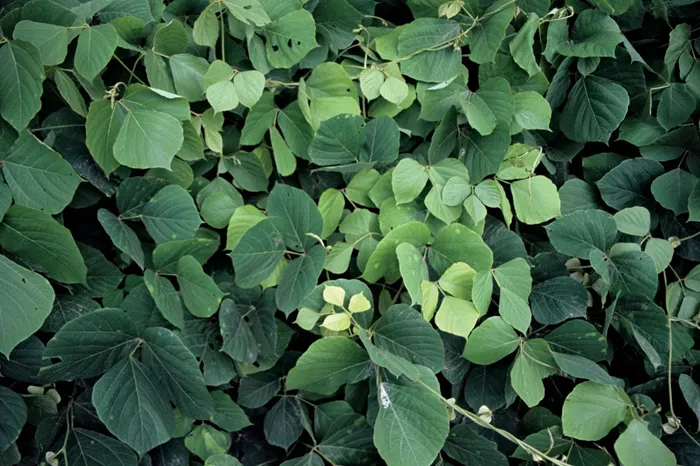When searching for a new home, factors like location, floor plan, and finishes often take center stage. However, potential buyers should not overlook landscaping. Neglecting to consider garden maintenance can lead to costly issues for homeowners. Experts warn that certain plants can cause significant problems, making it essential to inspect the yard carefully.
“Not every plant is suited for every yard,” says Rafi Friedman, president of Coastal Luxury Outdoors. “Some plants can spread aggressively, die due to unsuitable conditions, pose health risks to children or pets, or require high maintenance.”
The Cost of Invasive Plants
Purchasing a home with invasive plants can be financially burdensome. Tom Smith, owner of Desert Designer Landscape and Development in Tempe, Arizona, explains, “An invasive tree may need to be cut down and poisoned several times, costing hundreds or even thousands of dollars. The roots of these plants can lift sidewalks and walls, potentially causing tens of thousands of dollars in damage to your home.”
To help homebuyers avoid future landscaping problems, we consulted gardening and real estate experts about red flags to consider before making a purchase.
Key Plants to Avoid When Buying a Home
Kudzu
Kudzu is known as the most aggressive weed globally. “It can grow up to 18 inches per day, and getting rid of it usually requires professional help,” warns Tammy Sons, founder and CEO of TN Nursery in Tennessee.
Running Bamboo
While popular for its height, running bamboo is invasive and hard to control. Bret Douglas, a member of the Thumbtack Pro Advisory Board, advises opting for clumping bamboo instead, which is easier to manage.
Japanese Knotweed
This invasive species competes aggressively with other plants and is notoriously difficult to eradicate. “If any part of the plant’s underground roots is left behind, it can regrow, requiring multiple removal efforts,” says Matt Slaymaker, product manager with Lively Root.
Bermuda Grass
Common in warmer climates, Bermuda grass is invasive and must be contained with a border. Scott Seargeant, an international consulting arborist, warns that it can breach boundaries and must be mowed weekly to prevent seed spread.
Mint
Although mint is a delightful herb, it can quickly become a nuisance. “If you see it growing in the ground rather than in pots, run the other way,” Friedman advises.
Sissoo Tree
Sissoo trees grow rapidly and can damage masonry as their roots expand. “Their fast-growing roots can lift pavement and even cause structural issues,” says Smith.
Sweet Gum Tree
While sweet gum trees are visually appealing, their spiky seed balls can be hazardous. “These hard seed bundles can injure pets and damage bicycles,” Slaymaker warns.
English Ivy
Frequently used in landscaping, English ivy can overtake other plants if not managed. “It can kill other plants and even large trees,” Slaymaker notes, recommending Virginia Creeper as a safer alternative.
Chinese Elm Tree
Known for its fast growth, the Chinese elm tree’s roots can continue to grow for years, even after the tree is cut down. “This can lead to ongoing problems for homeowners,” Smith explains.
Blue Cape Plumbago
This plant adds vibrant color but can grow excessively large. Douglas recommends using smaller alternatives like Blue Daze for a more manageable size.
Ash Tree
Ash trees create beautiful canopies but face threats from the emerald ash borer, an invasive beetle. “If you live east of the Mississippi, expect to call an arborist if you buy a house with an ash tree,” Friedman advises.
Mexican Primrose
With its pink flowers, the Mexican primrose may seem appealing, but it can take over a garden. “If you want to maintain variety, consider alternatives like Lantana or Verbena,” Smith suggests.
Lilies
Though stunning, lilies can be toxic to pets, particularly cats. “If you have outdoor pets, avoid homes with lilies or remove them after moving in,” Friedman advises.
Eastern Black Walnut Tree
While this tree produces tasty walnuts, it also releases a natural herbicide that inhibits the growth of surrounding plants. “Their roots can extend up to 50 feet, creating large areas where nothing can grow,” Slaymaker warns.
Mexican Feather Grass
This popular drought-tolerant grass can spread rapidly and irritate skin upon contact. “It can cause mild dermatitis if brushed against,” Seargeant states.
Conclusion
When purchasing a home, it’s crucial to consider not just the building but also the landscaping. Being aware of invasive plants and their potential risks can save homeowners from costly repairs and maintenance. Before finalizing your home purchase, take the time to inspect the yard and consult experts to ensure a beautiful and manageable landscape.
Related topics:
- How to Keep Your Bouquets Fresh and Lasting Longer
- Tips for Incorporating Native Plants into Your Landscape
- Why Spider Plants Are the Ideal Houseplant for Beginners


